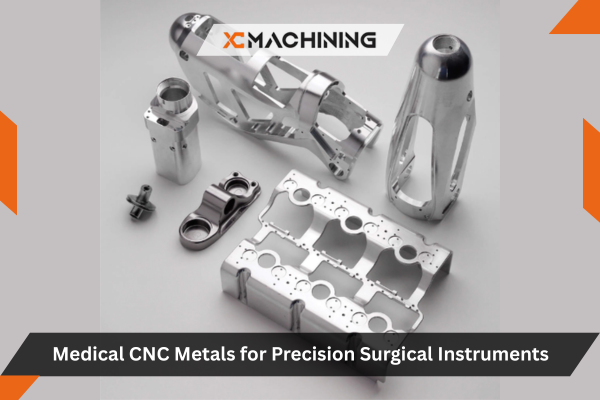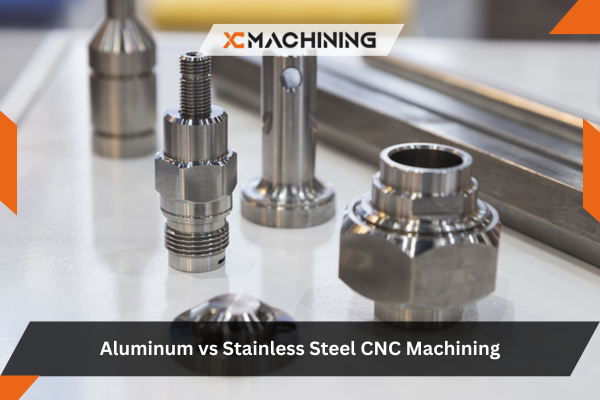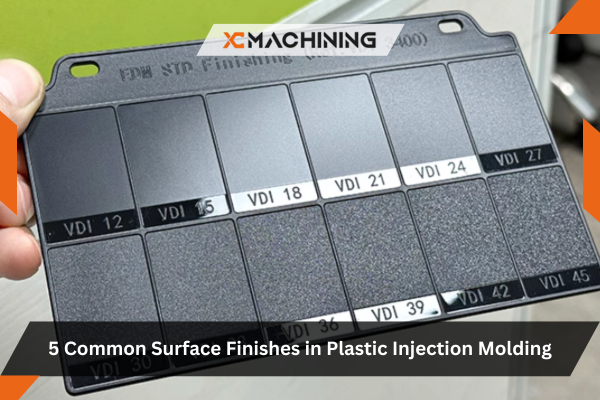Are you eager to produce parts that rival metal in strength but still want the convenience of 3D printing? Maybe you’ve heard about 3D Printing Carbon Fiber filaments that promise high durability, but your prints still come out weaker than expected. If you’re frustrated, you’re not alone. Many people discover that not all 3D Printing Carbon Fiber filaments live up to the hype, leaving them with brittle or underwhelming pieces.
Understanding the composition of these filaments is key to achieving success. Carbon fiber-infused filaments combine traditional thermoplastics like PLA, PETG, or nylon with fine carbon fiber strands. This enhances strength, rigidity, and heat resistance, making them ideal for functional parts and engineering applications. However, to get the best results, you need a hardened steel or ruby nozzle to prevent excessive wear.
In this blog, we’ll examine top-performing carbon fiber filaments, exploring their pros, cons, and print settings. We’ll also address your most pressing questions about cost, reliability, and best uses. By the end, you’ll be ready to print stronger parts that actually deliver on the promise of “reinforced performance.”
3D PRINTING CARBON FIBER: WHAT TO KNOW FIRST
Carbon fiber infusions elevate standard 3D printing carbon fiber materials by blending chopped fibers into thermoplastics. This technique significantly boosts strength and stiffness while keeping parts lightweight. Yet, each brand uses different base resins, fiber contents, and additives. That’s why results vary across filaments. From a practical standpoint, you need to consider nozzle wear, heated bed requirements, and how your final part balances weight with tensile strength. If you do your homework, 3D printing carbon fiber can yield parts that feel incredibly rigid and robust.
- Fiber Ratios matter because higher fiber content typically means higher strength but can make prints brittle.
- Base Polymer sets the temperature range, chemical resistance, and general ease of printing.
- Nozzle And Machine Setup affect how consistent the fiber distribution is and whether you’ll face clogs.
By understanding these fundamentals, you can avoid disappointment and produce parts that stand up to real-world challenges.
Balancing Strength And Weight
Carbon fiber filaments can deliver advanced mechanical properties, but if you go overboard on fiber loading, your item might be brittle. Balancing these factors is crucial when picking a brand.
Print Settings Count
No matter how great your filament is, poor calibration leads to weak layers or warping. Dialing in temperature, flow, and bed adhesion helps the fibers distribute properly.
Post-Processing Options
Some carbon fiber prints respond well to sanding or epoxy coatings. This step can enhance the exterior finish or further boost part integrity.
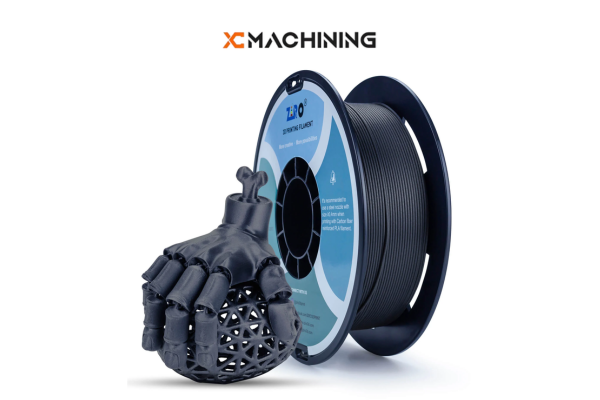
Why Carbon Fiber Reinforcement Matters
Regular thermoplastics like PLA or ABS can be great for everyday prints, but they sometimes lack the stiffness required for high-stress applications. When you infuse carbon fiber, you add tiny strands that support the polymer matrix, reducing flex under load. Think of it like rebar in concrete—except on a much smaller scale.
This reinforcement can transform an ordinary plastic part into a viable replacement for metal in certain contexts. Of course, it won’t match steel’s tensile strength, but for weight-sensitive projects, 3D Printing Carbon Fiber blends can be a game-changer. 3D Printing Carbon Fiber is commonly used in drone arms, robotic components, and automotive brackets due to its blend of strength and reduced mass. These advanced materials provide an excellent balance between durability and lightweight performance, making them ideal for high-performance applications.
The Difference Between Continuous And Chopped Fibers
All carbon fiber filaments are not created equal. Some incorporate continuous fibers within the plastic, delivering superior tensile strength. However, these continuous fiber setups usually require specialized printers. Most commonly, you’ll find filaments containing chopped fibers, which are short strands distributed throughout the polymer.
Chopped fiber is easier to print with standard machines but offers less dramatic strength gains compared to continuous fiber setups. While the overall part remains noticeably stiffer than pure plastic, it may not handle extreme loads the same way continuous fiber prints do. Still, for many hobby and light industrial projects, 3D Printing Carbon Fiber filaments provide an excellent balance of cost and performance.
Common Base Polymers For CF Filaments
Carbon fiber is typically mixed with a base polymer like nylon, PETG, or polycarbonate. Each polymer has its own temperature requirements, mechanical traits, and difficulty levels. Here’s a quick rundown:
- Nylon CF: Flexible and strong but can absorb moisture if not stored properly.
- PETG CF: Easier to print than nylon, with moderate heat resistance.
- Polycarbonate CF: Very rigid, higher temperature stability, but can be challenging to print.
The final strength depends on how these resins interact with the embedded fibers. If you want maximum toughness, polycarbonate blends might be your top choice—though they can require a heated enclosure. If you prefer ease of use, PETG-based CF filaments might be more forgiving.
Printer Hardware Considerations
To print strong carbon fiber filaments, you need hardware that can handle abrasive materials and elevated temperatures. CF filaments eat away at standard brass nozzles rapidly, so a hardened steel or ruby-tipped nozzle is recommended. You may also need an all-metal hot end to sustain the higher extrusion temps.
Bed temperature matters, too. Some filaments demand 80-110°C for best adhesion. Without a heated bed, corners may warp or lift, ruining your print. If your machine can’t maintain these conditions, you risk poor layer bonding and subpar mechanical properties. People who skip these steps often end up complaining that “3D printing carbon fiber” filaments aren’t truly strong—when, in reality, the hardware setup is at fault.
Filament Drying And Moisture Control
Carbon fiber filaments often come in moisture-sensitive base polymers like nylon. If the spool absorbs water, you can face popping, inconsistent extrusion, and weaker final parts. That extra moisture can also lead to unsightly surface defects.
Storing your filament in a sealed container with desiccant is crucial. Some enthusiasts even print from a filament dryer, which keeps the spool warm and dry throughout the entire print. Because carbon fiber filaments are more expensive, letting them degrade due to humidity is an unfortunate waste.
Layer Bonding And Infill Strategies
Strong filaments won’t matter if your layers don’t bond well. For 3D printing carbon fiber, ensuring adequate extrusion temperature and slow enough print speeds helps each layer fuse properly. If you run your prints too fast, you might see layer delamination, where the part splits along horizontal planes.
Additionally, choosing the right infill pattern can boost structural performance. A high-density or strong pattern (like a honeycomb or gyroid) can spread loads more evenly. However, if your part needs to be lightweight, you can reduce the infill but increase the perimeter walls. This approach keeps external rigidity while cutting overall mass.
The “Strongest” Filament Concept
When we say a filament is the “strongest,” we usually refer to its tensile or flexural strength. That said, real-world performance depends on print orientation, environmental conditions, and post-processing. A brand might advertise high strength, but if you print incorrectly or store it poorly, actual results vary.
Furthermore, some filaments excel at impact resistance but might lack ultimate tensile strength. Others are extremely stiff yet brittle. Consider the type of “strength” you need: is it tensile, shear, or compressive? Knowing your application’s stress type helps you pick the best 3D printing carbon fiber blend.
A Quick Comparison Table
Below is a brief comparison of popular 3D printing carbon fiber filaments. Actual specs differ by brand, so treat these figures as general guidelines:
| Filament Type | Base Polymer | Print Temp Range | Approx. Strength | Ease of Printing | Comments |
|---|---|---|---|---|---|
| Nylon CF | Nylon | 250-280°C | High tensile & tough | Moderate difficulty | Needs dryness can warp if not careful |
| PETG CF | PETG | 230-260°C | Good stiffness, medium | Fairly easy | Less prone to warp, still abrasive |
| PC CF | Polycarbonate | 270-300°C | Very rigid, high HDT | Challenging, needs enclosure | Great for functional prototypes |
| PP CF | Polypropylene | 220-240°C | Decent strength, flexible | Hard to get bed adhesion | Light & chemical-resistant |
| PEI/ULTEM CF | PEI-based | 350-400°C | Extremely strong & stable | Very advanced hardware is needed | For aerospace-level performance |
This table is just a snapshot. Each brand or distributor may tweak formulas, leading to slightly different mechanical data. Always read the data sheets for the specific product.
Ensuring Dimensional Accuracy
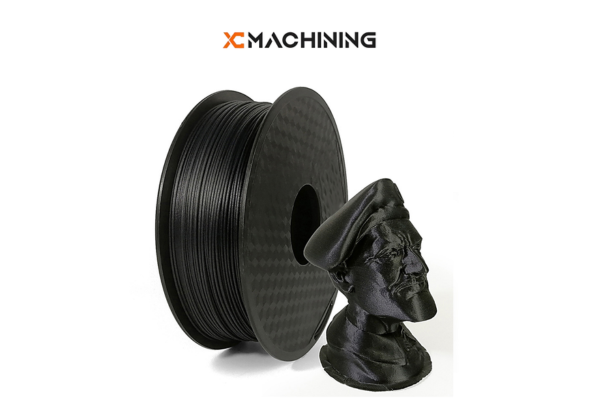
Carbon fiber filaments often have lower thermal expansion than pure plastic, so they can warp less. That’s a plus for dimensionally stable prints. However, if your slicer settings don’t match the material’s shrinkage, small inaccuracies can creep in.
Calibrate extruder flow for each new filament spool to avoid over- or under-extrusion. Also, check that your X, Y, and Z steps are correct. After printing a test cube, measure it with calipers. If the size is off, fine-tune your steps or slicer scaling. This step ensures your final parts meet tolerance requirements.
Cost And Availability Factors
Carbon fiber filaments cost more than standard PLA or ABS. Expect to pay double or triple per kilogram. That higher price can be justified by the mechanical advantages. Also, not all local suppliers carry these specialized filaments, so you may order them online.
If the budget is tight, consider partial usage. You can print only the part of your model that needs extra strength in carbon fiber, while the rest uses a cheaper filament. Another approach is printing prototypes in regular plastic, then only final production items in carbon fiber, minimizing wasted material on test prints.
Safety And Health Considerations
3D printing carbon fiber filaments releases fine particulate matter. Using an enclosed printer with proper ventilation or an air filter is advisable. Additionally, the abrasive nature of carbon fiber dust can irritate eyes and lungs, so keep your workspace clean.
When removing prints or cleaning up, wear gloves and a respirator if you’re dealing with dusty surfaces. These precautions are especially important if you sand or machine the printed parts after they’re built. Protecting your health ensures you can continue experimenting with 3D printing carbon fiber filaments safely.
CONCLUSION
So, what are the strongest carbon fiber 3D printing filaments? The answer varies by base polymer, fiber loading, and brand. A polycarbonate-based CF filament might offer top-tier stiffness, while a nylon-based variant excels in impact resistance. PETG-based versions give a nice midpoint of ease and strength.
When you factor in hardware upgrades (like a hardened nozzle) and consistent moisture control, carbon fiber filaments can yield parts with remarkable strength-to-weight ratios. They’re not a magic bullet, though. Adequate bed temperatures, precise print settings, and good post-processing remain critical. In short, pick the right filament, follow best practices, and you can produce robust, functional items that outshine traditional plastics.
FAQs
Does carbon fiber filament always require a heated enclosure?
It depends on the base polymer. Nylon and polycarbonate blends often benefit from an enclosure to prevent warping, but some PETG-based CF filaments can print open-air.
Can I use a brass nozzle for carbon fiber filaments?
Technically yes, but it will wear out quickly. Hardened steel or tungsten nozzles are recommended to handle the abrasive fibers.
Are carbon fiber filaments more brittle than standard plastics?
They can be if the resin is stiff. Some filaments add fiber for strength but lose ductility. That’s why understanding the base polymer is essential.


